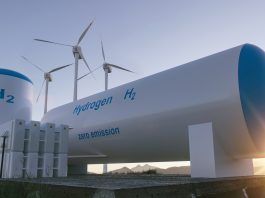A collaborative research team is developing technologies that can be adapted to make the oil and gas industry more energy efficient, such as fuel cells for use on the Norwegian continental shelf.
Scientists from SINTEF and the Norwegian University of Science and Technology (NTNU) revealed that utilising fuel cells on the continental shelf will have environmental and political benefits, such as the reduction in CO2 emissions from not having to lay new subsea cables.
How can this new technology contribute to energy efficiency?
Researchers intend to develop technologies and concepts to make the oil and gas industry more energy efficient and reduce the emissions from offshore production. The work is currently being conducted in the Low Emission research centre, with scientists aiming to contribute toward reducing greenhouse gas emissions from the Norwegian oil and gas industry by 40% by 2030.
How do scientists intend to make this a reality?
One of the topics that the scientists are focusing on is the numerous gas turbines that are currently responsible for supplying the platforms with electricity.
“At present, natural gas is burnt in gas turbines to generate electricity for platform operation. This is a well-established technology with many advantages, including low investment costs. However, offshore gas turbines have a low degree of efficiency and produce 84% of the greenhouse gas emissions from the Norwegian shelf. This corresponds to about 11.5 million tonnes of Co2,” explained Belma Talic, a SINTEF Research Scientist.
While a gas turbine on the shelf will provide one-third of the energy discovered in natural gas, a fuel cell can provide almost two thirds, which is why scientists have suggested laying cables from onshore to supply platforms with clean hydroelectric energy. However, another option that could replace the gas turbines or be utilised as a supplement is employing fuel cells on the continental shelf.
This technology has existed for several decades and is utilised today in hydrogen-powered cars, transport vehicles, and space vehicles. It is well tested and is a miniature power station that utilises an electrochemical process to convert hydrogen and oxygen from the air to electricity, water, and heat.
“Fuel cells can use the energy found in hydrogen fuel. It is also possible to generate hydrogen locally using surplus electricity from offshore wind turbines,” said Luis Colmenares-Rausseo, a Research Scientist at SINTEF.
How can fuel cells be employed in this technology?
In the project titled: ‘Fuel cells for zero emission heat and power,’ scientists are now investigating the possibility of utilising fuel cells offshore.
Currently, there are two different concepts that scientists have identified as promising for offshore use:
- A Proton-Exchange Membrane Fuel Cell (PEMFC), which functions at low temperatures (below 100°C) and requires pure hydrogen as fuel. These are relatively cheap and are currently being used in hydrogen-powered vehicles from Toyota and Hyundai; and
- A Solid Oxide Fuel Cell (SOFC). This functions at temperatures above 500°C and is less flexible where the energy supply varies because it takes longer to start up and shut down. However, the advantage of this technology is that it does not depend on hydrogen as a fuel source, but can also operate utilising other fuels, such as natural gas and ammonia.
The SOFC high-temperature fuel cell is ideal for permanent installations that combine heat and energy generation (DHP). In such situations, the degree of efficiency can reach 90%. According to the researchers, this type of fuel cell can also be utilised reversibly, producing hydrogen electrolytically when a wind turbine produces surplus energy.
How will this contribute to improving energy use?
Colmenares-Rausseo concluded that utilising fuel cells to supply part of the energy needs of a platform has many advantages: “First of all, fuel cells are modular technology, and the size of the system can therefore easily be adjusted, depending on how much energy is needed. They require little space and thus can be used in most locations.
“Secondly, fuel cells respond rapidly to changes in load – in other words, the amount of energy produced. This makes them well suited to balancing varying electricity supply from, for example, offshore wind turbines. Last but not least, they have a higher degree of efficiency than gas turbines.”
In the Low Emission centre, work is in progress on various assessments of these two technologies (PEMFC and SOFC). They intend to discover how to provide the optimal conditions for maximising efficiency and lifetime.
The scientists are also exploring possibilities for combining these fuel cells with gas turbine operation:
- In the case of the PEMFC, they are investigating how the lifetime of the fuel cell is affected by the operating conditions it will be exposed to aboard an offshore platform, especially under variable load and with minor impurities in the hydrogen gas; and
- In the case of SOFC, the scientists are looking at the performance of the cell and how the materials are affected during reversible use. In practice, this means periodic alternation between the fuel cell and electrolysis modes, or in other words between energy generation and hydrogen production.









